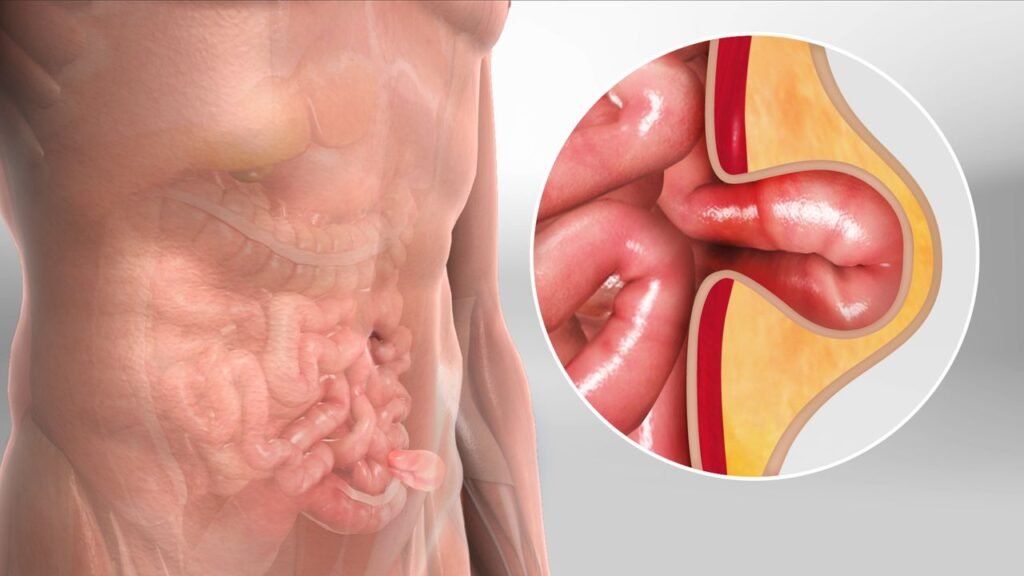
A hernia occurs when an internal part of the body pushes through a weakness or opening in the muscle or tissue wall that usually contains it. Hernias are most common in the abdominal area but can also appear in the upper thigh, belly button, or groin.
🔹 Types of Hernias
1. Inguinal Hernia (Most Common)
- Occurs in the groin
- More common in men
- Happens when intestines or fat push through the inguinal canal
2. Femoral Hernia
- Lower groin/thigh area
- More common in women
- Less common than inguinal hernias
3. Umbilical Hernia
- Occurs at the belly button
- Common in newborns; often resolves on its own
- Can also affect adults
4. Incisional Hernia
- Develops at the site of a previous surgical incision
- Common after abdominal surgery
5. Hiatal Hernia
- Part of the stomach pushes up into the chest through the diaphragm
- May cause acid reflux or heartburn
6. Epigastric Hernia
- Occurs between the belly button and chest
- Usually small but can be painful
🔹 Causes and Risk Factors
- Heavy lifting
- Chronic coughing or sneezing
- Straining during bowel movements or urination
- Obesity
- Pregnancy
- Previous surgeries
- Congenital muscle weakness (present at birth)
🔹 Symptoms
- A visible lump or bulge, especially when standing or coughing
- Discomfort or pain at the site of the bulge
- Heaviness or pressure in the abdomen
- Burning or aching sensation
- Pain that worsens with activity or straining
⚠️ Incarcerated or Strangulated Hernia
- Incarcerated: Contents of the hernia get stuck
- Strangulated: Blood supply is cut off → medical emergency
- Symptoms: severe pain, redness, fever, nausea, vomiting
🔹 Diagnosis
- Physical examination
- Imaging tests if unclear: Ultrasound, CT scan, or MRI
🔹 Treatment Options
🩺 Watchful Waiting
- For small, asymptomatic hernias
- Regular monitoring by a doctor
🛠️ Surgical Repair (Definitive Treatment)
1. Open Hernia Repair
- Traditional surgery with an incision over the hernia
- Hernia sac is pushed back and the wall is reinforced with stitches or mesh
2. Laparoscopic (Minimally Invasive) Surgery
- Small incisions, uses a camera and instruments
- Faster recovery, less pain, smaller scars
3. Robotic Hernia Surgery
- A form of laparoscopic surgery with enhanced precision
🧵 Mesh repair is often used to reduce the risk of recurrence.
🔹 Recovery After Hernia Surgery
- Most people return to normal activities within 1–2 weeks (laparoscopic)
- Avoid heavy lifting for 4–6 weeks
- Follow-up to check for complications or recurrence
🔹 Prevention Tips
- Maintain a healthy weight
- Avoid heavy lifting or learn proper lifting techniques
- Treat chronic cough or constipation
- Exercise to strengthen core muscles
- Stop smoking (helps tissue healing)
❗️When to Seek Immediate Medical Help
- Sudden, severe pain in a hernia site
- Hernia that becomes firm, tender, or non-reducible
- Nausea, vomiting, or fever along with a hernia



